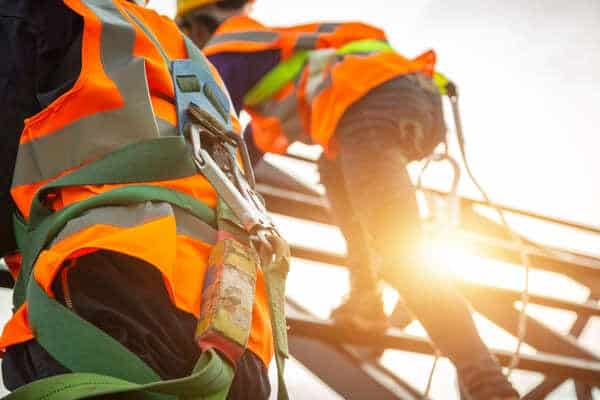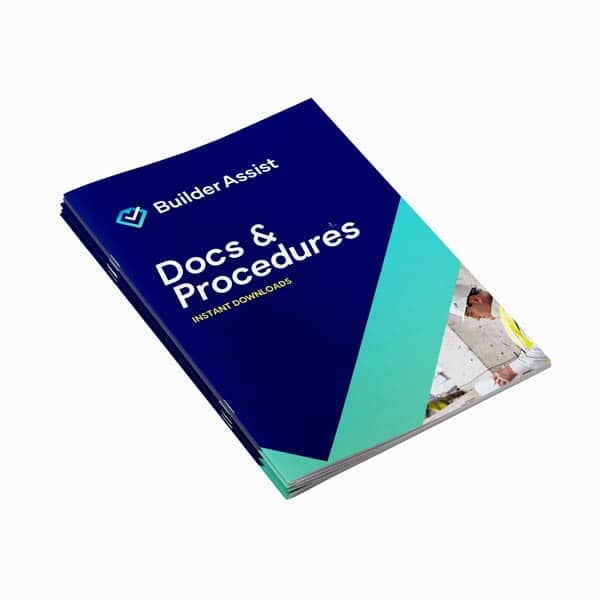
A Safety Management Plan (SMP) is a legal requirement on all construction sites. It aims to ensure all site Work Health and Safety policies and procedures are met by each contractor.
An SMP plans all WHS processes and procedures for a construction project. It's also known as a WHS Management Plan or a Work Health and Safety Management Plan (WHSMP).

A Safety Management Plan (SMP) saves time, money and angst. Most importantly, it safeguards workers.
Your worksite’s SMP is required to be in place and understood prior to the commencement of work on a construction site.
So, what's included in a Safety Management Plan?
At a minimum, there is a number of key information that is included in a workplace SMP:
- Information of key personnel. This includes names, roles and responsibilities of each individual or group. These key team members may include but are not limited to; the Principal Contractor, Project Manager, WHS Representative and Site Supervisor.
- Site and project-specific information such as site access and security, fitness for work, working hours and required training, as well as competency and induction requirements.
- An outline of the management process of risks and incidents, including risk control procedures, incident reporting and notification processes, site safety rules and rehabilitation processes in the event of an incident.
- Safe Work procedures and the management of contractors and workers. This section references your worksite’s JSAs, SWMS and other WHS procedures that ensure the safe rollout of works onsite. This is in compliance with both the Work Health & Safety Act and Regulations for your state or territory. You may also wish to cover topics such as fatigue management and safety discipline across your contractor pool.
- Consultation and Communication processes on site. This section outlines what methods of communication are in place with subcontractors across the entirety of the project. This would likely include daily pre-start meetings and weekly toolbox consultations. These meetings are an opportunity for discussions around continuous improvement and site safety.
- Document control and record keeping. How will the SMP be recorded? How regularly will it be reviewed and updated? How do you plan to ensure the document is controlled?
Who is responsible for developing the SMP?
The principal contractor is responsible for providing an SMP. They can be assisted by key personnel such as a WHS Representative or other external stakeholders. However, the principal contractor has the knowledge and understanding of the project, its requirements and WHS legislation.
Safety Management Plans are comprehensive and take time to pull together. Our advice? Get started on developing a site-specific SMP well before your proposed project commencement date.
A Safety Management Plan can seem daunting to develop. However once completed, it saves time, money and angst. Most importantly, it safeguards workers.
To help create your SMP, Builder Assist offers a number of templates that are user-friendly and instantly downloaded. Each of these include:
- Industry-leading documentation developed by award-winning industry experts
- Microsoft formatting for easy editing
- Customisable to your company brand
- Full instructions on how to use the templates
To purchase a trade-specific Safety Management Plan template, search our documents by simply clicking here.
Not sure what documents and procedures you might need in your trade? No worries! Simply visit Tradespeople Documentation. Here you can access Builder Assist’s instant downloads of documents and procedures specific to your trade.
View the Work Health & Safety Act, Regulations and Codes of Practice in your state or territory, here.
You can also view the Work Health & Safety Regulators in your state or territory, by visiting the SafeWork Australia website.

Safety Management Plans (WHS)
Specifically designed for each trade starting up a business, these Work Health Safety Management Plans or WHS Management Plans, provide support with the management of Work Health & Safety in the workplace. Also referred to as Occupational Health & Safety (OH&S) the material provided in this section will assist with WHS/OHS management and training requirements for the workplace.



